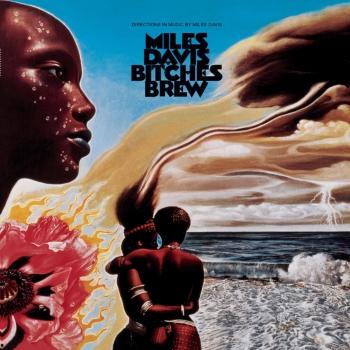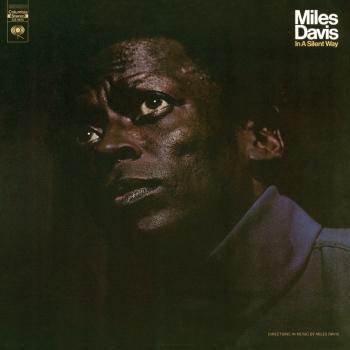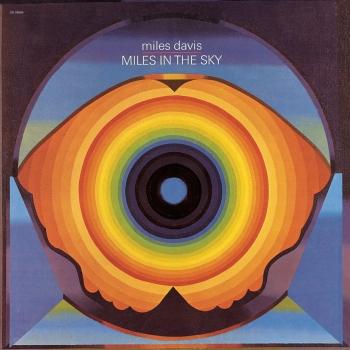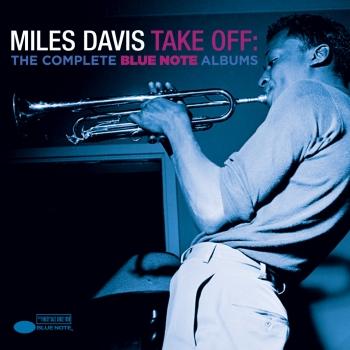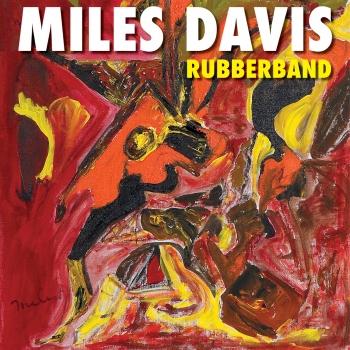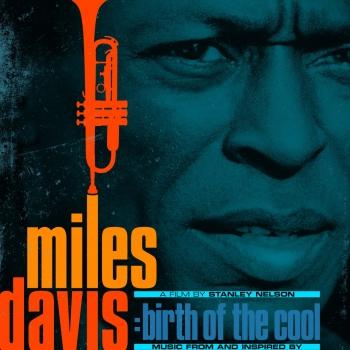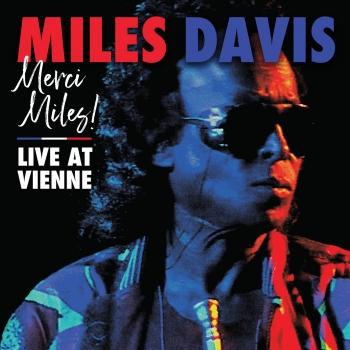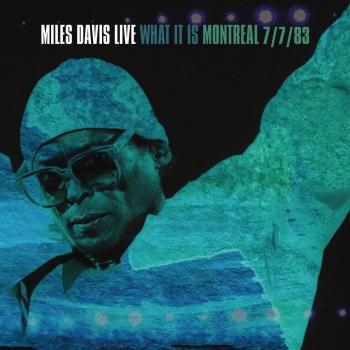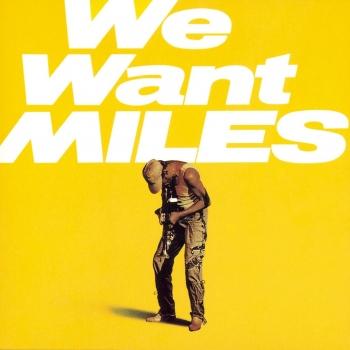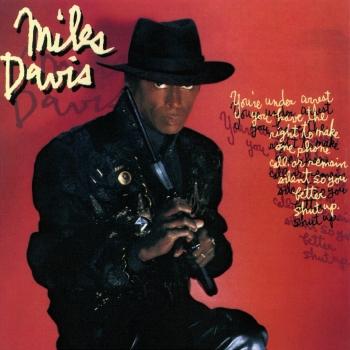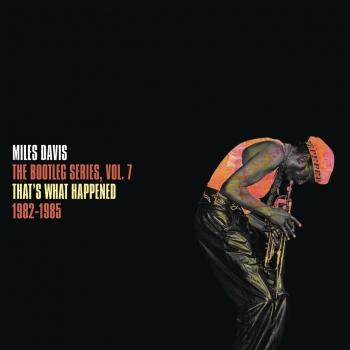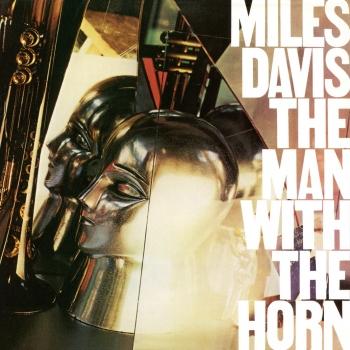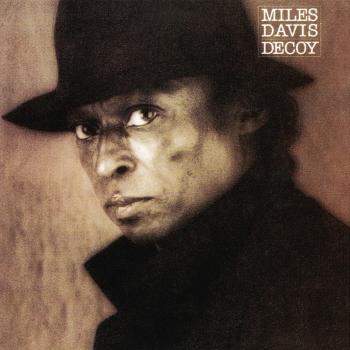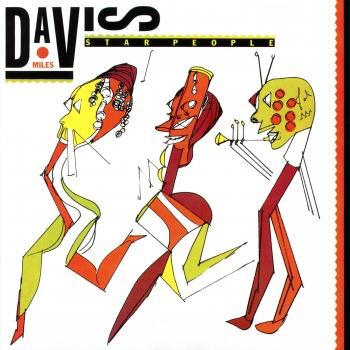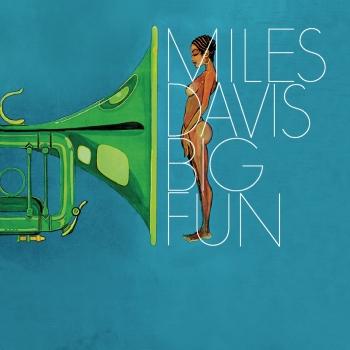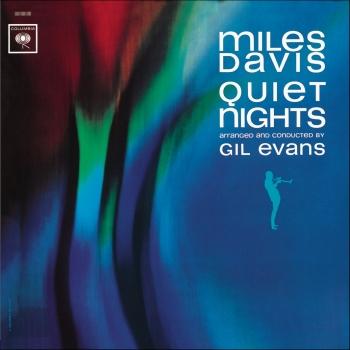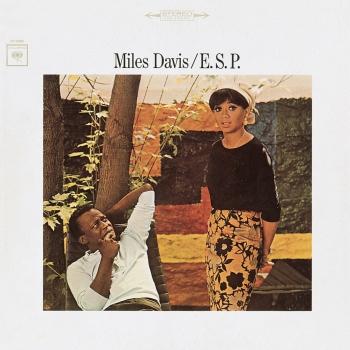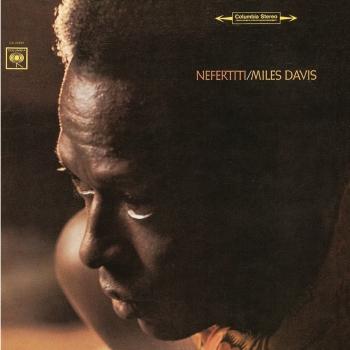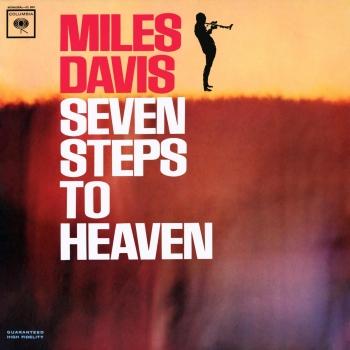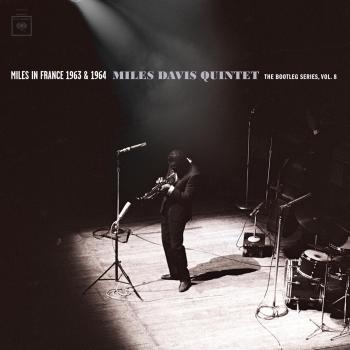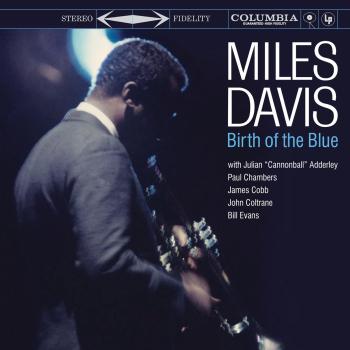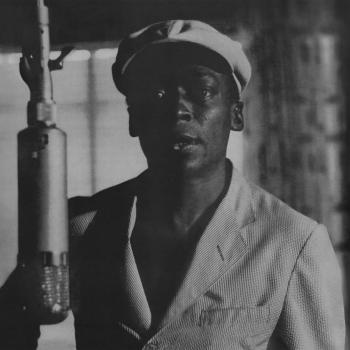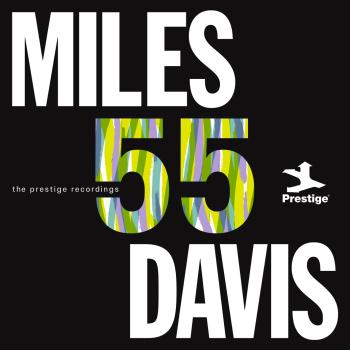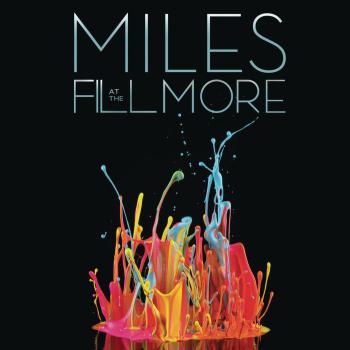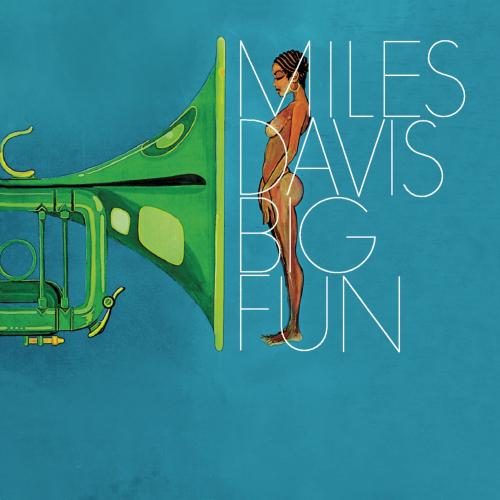
Big Fun (2022 Remaster) Miles Davis
Album info
Album-Release:
2000
HRA-Release:
23.09.2022
Album including Album cover
I`m sorry!
Dear HIGHRESAUDIO Visitor,
due to territorial constraints and also different releases dates in each country you currently can`t purchase this album. We are updating our release dates twice a week. So, please feel free to check from time-to-time, if the album is available for your country.
We suggest, that you bookmark the album and use our Short List function.
Thank you for your understanding and patience.
Yours sincerely, HIGHRESAUDIO
- 1 Great Expectations 27:23
- 2 Ife 21:34
- 3 Recollections 18:49
- 4 Trevere 05:55
- 5 Go Ahead John 28:27
- 6 Lonely Fire 21:21
- 7 The Little Blue Frog 09:10
- 8 Yaphet 09:39
Info for Big Fun (2022 Remaster)
Released in April 1974, Big Fun filled in a few of the gaps with tracks recorded between 1969 and 1972. Standout performances from November 1969, recorded on the heels of the Bitches Brew sessions, reveal how early Miles began to incorporate Indian instruments—sitar, tabla—into his music: “Great Expectations/Orange Lady,” “The Little Blue Frog” (Miles’s muted trumpet adding a delicate, retro touch), and the soulful and deeply lyrical “Yaphet” were wonderful rescues.
Recorded just a few months later at the start of 1970, “Recollections” and “Lonely Fire” are down-tempo, extended studies in shadowy feel and texture, atmospheric electric keyboards and restrained solos. “Go Ahead John” is a lengthy, hard-driving jam from the Jack Johnson sessions; John McLaughlin’s brash guitar up front and center. “Ife,” from the summer of 1972 and named for the daughter of percussionist Mtume, is an Afro-futurist mini-suite, flows with a rich, suite-like narrative of rhythm and space.
Big Fun is not a studio album by the great Miles Davis, but a compilation with themes taken from various recording sessions performed by different groups. It is not, therefore, a cohesive work that functions as a whole, but a collection of pieces that have in common the trumpeter's leadership and jazz-fusion-electric, but little else.
On the other hand, given that in this reissue the Columbia Records label added up to four bonus tracks (representing half of the album), from different recording sessions and only released, until then, in The Complete Bitches Brew Sessions, the sensation of being in front of a collage is accentuated. Nevertheless, like everything Miles Davis released, it is a recommendable edition for jazz lovers, especially for those who enjoy his electric phase in which he tried to fuse jazz and rock.
In fact, the opening track Big Fun, Great expectations, a composition by Davis and Joe Zawinul, was recorded two months after the session that resulted in the masterpiece Bitches Brew (Columbia Records, 1970), so it is almost a continuation. However, the tracks included here were recorded from 1969 to 1972, and some of the pieces were not released by Teo Macero, so it is an unfinished work, which only saw the light of day due to the company's interest in taking advantage of the trumpeter's commercial pull: Bitches Brew was one of the best-selling albums in the history of jazz.
Forgetting the bonus tracks, which don't contribute much (except for the remarkable Recollections, by Zawinul), Big Fun is an interesting edition that, among other things, has the incentive of allowing us to listen to Miles Davis' experiments with Indian instrumentation and sonorities. Already in the first cut, the long Great Expectations, recorded with a group of eleven musicians, the presence of an electric sitar and a tambura can be heard, incorporated into the usual atmospheres that he was developing at the end of the 60s. The result is as engaging and personal as ever, so it's a pity he didn't continue his approach to the Indian musical tradition.
Another moment of great interest comes with the first cut of the second disc, Go ahead John, the longest on the album and the only one recorded with a quintet, which includes fascinating passages. Big Fun is not one of Miles Davis' must-haves, but it is interesting to appreciate his evolution.
"Despite the presence of classic tracks like Joe Zawinul's "Great Expectations," Big Fun feels like the compendium of sources it is. These tracks are all outtakes from other sessions, most notably Bitches Brew, On the Corner, and others. The other element is that many of these tracks appeared in different versions elsewhere. These were second takes, or the unedited takes before producer Teo Macero and Miles were able to edit them, cut and paste their parts into other things, or whatever. That is not to say the album should be dismissed. Despite the numerous lineups and uneven flow of the tracks, there does remain some outstanding playing and composing here. Most notably is "Great Expectations" from 1969, which opens the album. Here the lineup is Miles, Steve Grossman, Bennie Maupin, John McLaughlin, Khalil Balakrishna, and Bihari Sharma on sitar and tambura, Herbie, Chick Corea, Ron Carter, Harvey Brooks, Billy Cobham, and Airto. Creating a series of vamps from drones and a small melodic figure, there is very little in the way of groove or melodic development until the middle section, where a series of modalities enters the composition. The second album in the set features "Go Ahead John," an outtake from Jack Johnson's sessions that is 28 minutes in length. It's a riff-based groover, with McLaughlin and his wah-wah pedal setting the pace with Steve Grossman on soprano. The basic motif is the blues, floating around E and Bb flat, but there are modulations introduced by Miles into Db flat that add a kinkier dimension into the proceedings as well. Dave Holland is the bass player, and DeJohnette is the drummer. There is no piano. What's most interesting about this date is how it prefigures what would become "Right Off" from Jack Johnson. It doesn't have the same fire, nor does it manage to sustain itself for the duration, but there are some truly wonderful sections in the piece. This is for Miles fans only, especially those of his electric period, because it fills in the puzzle. The reissue added four bonus tracks to the original double-LP set, but other than "Recollections" by Zawinul, they shed little light on the mystique and development of the intensely creative music being developed in 1969 and 1970. Others should be directed to Bitches Brew, In A Silent Way, Jack Johnson, or Live Evil as starting points." (Thom Jurek, AMG)
Miles Davis, trumpet (1,3-8), electric trumpet with wah wah (2)
Steve Grossman, soprano saxophone (1,4,5,7,8)
Sonny Fortune, soprano saxophone & flute (2)
Carlos Garnett, soprano saxophone (2)
Wayne Shorter, tenor saxophone (3,6)
Bennie Maupin, bass clarinet (1,3,4,6-8), clarinet & flute (2)
John McLaughlin, electric guitar (1,3,5,7,8)
Khalil Balakrishna, electric sitar (1,4,6-8), Indian instruments (6)
Herbie Hancock, electric piano (1,8)
Chick Corea, electric piano (1,3,4,6-8)
Lonnie Liston Smith, electric piano (2)
Harold I. Williams, Jr., electric piano (2)
Joe Zawinul, electric piano (3,6), Farfisa organ (6)
Larry Young, organ & celeste (4,7)
Ron Carter, double bass (1,8)
Harvey Brooks, Fender bass (1,4,6-8)
Michael Henderson, electric bass (2
Dave Holland, electric bass (3,5), double bass (4,6,7)
Billy Cobham, drums (1,4,6-8), triangle (3,8)
Al Foster, drums (2)
Billy Hart, drums (2)
Jack DeJohnette, drums (3-7)
Airto Moreira, percussion (1,3,6), cuica (3,4,7,8), berimbau (4,7,8), Indian instruments (6)
Badal Roy, tabla (2)
James Mtume, African percussion (2)
Bihari Sharima, tamboura (1,4,7,8), tabla (1,8)
Digitally remastered
Please Note: We offer this album in its native sampling rate of 96 kHz, 24-bit. The provided 192 kHz version was up-sampled and offers no audible value!
Trumpeter Miles Davis grew up in East St. Louis, Illinois, just across the river from St. Louis, Missouri. His parents were affluent, and had the means to support his musical studies as a boy. He began playing the cornet at age nine, and received his first trumpet at around twelve or thirteen. He studied classical technique, and focused mainly on using a rich, clear tone, something that helped define his sound in later years.
As a teenager, he played in various bands in St. Louis, which was rich with jazz, as big bands often stopped there on tours throughout the Midwest and southern states. The most important experience he had was when he was asked to play in the Billy Eckstine band for a week as a substitute. The group included Charlie Parker, Dizzy Gillespie, and Sara Vaughan. After playing with these stars, Davis knew he had to move to New York to be at the heart of the jazz scene.
In Pursuit of Parker:
In 1944 Davis moved to New York City where he had earned a scholarship to study trumpet at the Juilliard School of Music. Upon arriving however, he sought after Charlie Parker, and meanwhile spent all of his time in jazz clubs listening to bebop. He was transfixed on the music, and grew utterly bored with his classical studies. After less than a year at Juilliard, he dropped out and tried his hand at performing jazz.
Although not particularly stunning, his playing was good enough to finally attract Charlie Parker, and Davis joined his quintet in 1945. He was often criticized for sounding inexperienced, and was compared unfavorably to Dizzy Gillespie and Fats Navarro, who were the leading trumpeters at the time. Both boasted stellar technique and range, neither of which Davis possessed. In spite of this, he made a lasting impression on those who heard him, and his career was soon set aloft.
Cool Jazz and a Rise to Fame:
Encouraged by composer and arranger Gil Evans, Davis formed a group in 1949 that consisted of nine musicians, including Lee Konitz and Gerry Mulligan. The group was larger than most bebop ensembles, and featured more detailed arrangements. The music was characterized by a more subdued mood than earlier styles, and came to be known as cool jazz. In 1949 Davis released the album Birth of the Cool (Captiol Records).
Change of artistic direction became central to Davis’ long and increasingly influential career. After dabbling in hard bop as a leader on four Prestige recordings featuring John Coltrane, he signed with Columbia records and made albums that featured Gil Evans’ arrangements for 19-piece orchestra. These were Miles Ahead, Porgy and Bess, Sketches of Spain, and Quiet Nights. He rose in popularity with these recordings, in part due to his signature sound, which he often enhanced by using a Harmon mute.
Kind of Blue and Beyond:
In 1959 Davis made his pivotal recording, Kind of Blue. It was a departure from all of his previous projects, abandoning complicated melodies for tunes that were sometimes only composed of two chords. This style became known as modal jazz, and it allows the soloist expressive freedom since he does not have to negotiate complex harmonies. Kind of Blue also featured John Coltrane, Cannonball Adderley, and Bill Evans. The album is one of the most influential in jazz, and is Columbia Records’ best-selling jazz record of all time.
In the mid 1960s Davis changed directions again, forming a group with Herbie Hancock, Wayne Shorter, Tony Williams, and Ron Carter. This group was known for the excellence of each individual member, and also for its unique performance approach. Each night the tunes would sound different, as the musicians would sometimes only loosely adhere to the song structures, and often transition from one right into the next. Each player was given the chance to develop his solos extensively. Like all of Davis’ previous groups, this quintet was highly influential.
Late Career:
Despite health problems, drug addiction, and strained personal relationships, Davis continued to play, changing his approach with each new project. In the late 60s and 70s, he began to experiment with electronic instruments, and grooves that were tinged with rock and funk music. Two famous recordings from this period are In a Silent Way and Bitches Brew. By the time the 1980s rolled around, Davis was not only a jazz legacy, but a pop icon, whose music, persona, and fashion style were legendary.
Davis died in 1991, as perhaps the most influential jazz artist ever. His vast body of work continues to be a source of inspiration for today’s musicians. (Jacob Teichroew, About.com Guide)
This album contains no booklet.









